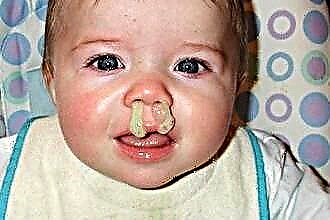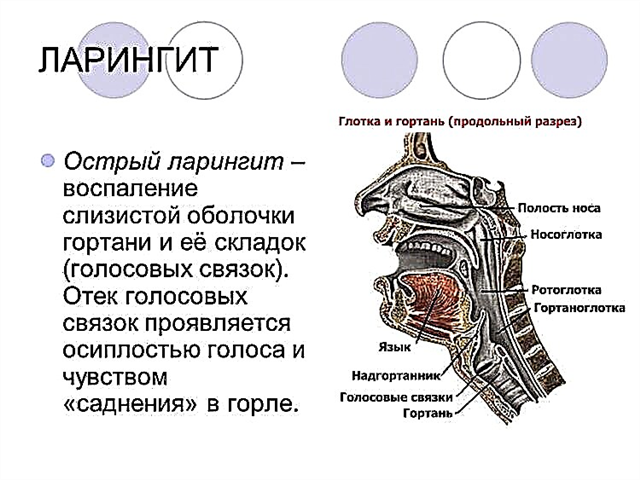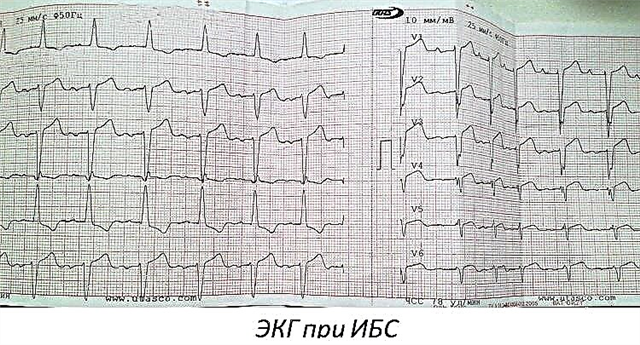The appearance of blood in the ear with otitis media is due to the development of inflammation in the mucous membranes of the middle and inner ear, as well as damage to the tympanic membrane or the opening of a boil in the external auditory canal. Catarrhal processes in the ear lead to morphological changes in tissues, as a result of which bleeding may occur.
The presence of blood impurities in the serous or purulent exudate indicates the severity of the course of the disease. If a hemorrhagic exudate is found in the ear canal, you should immediately seek help from a specialist. Untimely therapy often causes serious complications.
Prerequisites

Often, the occurrence of bloody discharge is due to the development of otolaryngological diseases, accompanied by inflammation of the epithelial tissues in the hearing aid. Inflammation of the mucous membranes of the organ of hearing can be provoked by:
- infections;
- chronic inflammation;
- neoplasms in the ear;
- perforation of the ear membrane;
- eczematous eruptions;
- mechanical damage.
The prerequisites for the occurrence of hemorrhagic exudate are shooting pains in the ear, painful sensations on palpation of the tragus, purulent discharge from the auditory canal, hearing impairment. When pathological processes occur in the mucous membrane, tissue trophism is disturbed, which leads to its degradation. Subsequently, there is a thinning of the walls of the vessels, which increases their permeability. This is one of the key causes of ear bleeding.
Causes of bleeding
There are several types of ENT diseases, in which serious degenerative changes occur in the epithelial tissues of the hearing organ. The appearance of blood from the ear with otitis media may be due to the presence of the following types of ear pathology:
- Acute otitis media is a disease in which catarrhal processes occur in the ear cavity, Eustachian tube and mastoid process. At one of the stages of the development of the disease (perforation stage), perforated holes are formed in the ear membrane. Their occurrence leads to rupture of the capillaries that permeate the membrane. At the same time, blood impurities can be found in small amounts in serous secretions;

- purulent otitis media - purulent inflammation of the mucous membranes of the ear, accompanied by a change in the structure of the ciliated epithelium. Pathological processes lead to ulceration of the walls of the ear cavity, as a result of which bloody impurities appear in the purulent exudate;
- bullous otitis media is a postinfluenza complication, in which small vesicles filled with hemorrhagic exudate form on the walls of the ear membrane and tympanic cavity. Their spontaneous opening causes blood to appear in the external auditory canal;
- myringitis - catarrhal processes in the ear membrane, leading to the appearance of hemorrhagic rashes on its surface. As a result of stretching the elastic membrane, the bubbles burst, after which bloody discharge occurs in the ear;
- limited otitis externa - inflammation in the hair follicle, which leads to the formation of a purulent abscess. With further infiltration of the affected tissues, the boil is opened, which leads to the outflow of not only purulent masses, but also blood.
The appearance of hemorrhagic exudate in the ear canal may indicate the development of inflammation in the ear labyrinth.
In rare cases, minor bleeding in the ear canal occurs due to the development of a fungal infection. As a rule, the multiplication of fungal flora leads to the appearance of allergic vesicles filled with serous exudate and blood. Mechanical damage to the vesicles during scratching leads to the evacuation of the contents into the ear canal.
Neoplasms
Ineffective and untimely therapy of ENT diseases can cause local complications. In particular, chronic tissue inflammation leads to the appearance of benign or malignant neoplasms. Their growth can cause hemorrhages. Experts include the most common complications:
- cholesteatoma - small tumors that form in the middle ear from keratinized epithelial cells and connective tissue. As they grow, they destroy healthy tissues, which leads to inflammation and, as a result, bloody discharge;
- polyps are a complication of purulent inflammation in the middle ear, which is characterized by the proliferation of tissue in the auditory canal. Polyps are localized mainly on the surface of the mucous membrane of the ear cavity. Their spread often causes short-term bleeding;
- carcinoma - a malignant neoplasm resulting from uncontrolled division of epithelial cells. Due to the increase in their volume, blood vessels are damaged, which leads to hemorrhage.

Important! In case of severe bleeding, do not put cotton turundas in the ear canal.
A blockage in the ear canal can cause blood to enter the ear labyrinth. Damage to the semicircular canals is fraught with auditory dysfunction and vestibular disorders.
Aerootit
The appearance of blood from the ear with otitis media can be caused by a sharp change in the internal and external pressure on the ear membrane. An ENT disease is considered professional and is called aerootitis. The following categories of persons are most susceptible to the development of ear pathology:
- divers;
- parachutists;
- pilots;
- submariners;
- stewardesses.
With a sharp increase or decrease in external pressure, the eardrum either protrudes or is pressed into the ear. If the pressure difference is not high, the person feels congestion in the ears. However, excessive pressure on the ear membrane provokes disturbances in the structures of the middle ear. This leads to inflammation or perforation of the membrane itself, which causes hemorrhages.
First aid
If bleeding occurs from the ear canal, you should immediately seek the help of a specialist. If the bleeding is severe, the patient needs to be given first aid before the doctor arrives:
- lay the patient down so that blood flows freely from the ear canal;
- fold the sterile bandage in 5-6 layers and apply to the sore ear;
- if the appearance of blood is probably due to the opening of the boil, treat the wound with boric alcohol.
Important! Before the arrival of a specialist, medications should not be instilled into the ear. In the presence of perforations in the ear membrane, they can provoke hearing impairment and even greater swelling of the mucous membrane.
In case of serious damage to the tympanic membrane, its regeneration without surgery is practically impossible. To restore the integrity of the membrane, the surgeon performs tympanoplasty, due to which recovery occurs within 3-4 weeks.
Drug treatment
The principle of treatment of the disease is determined by the cause of the hemorrhage, which depends on the type and stage of development of otitis media. After a comprehensive examination to relieve symptoms, pathologists can be assigned the following types of pharmaceuticals:
- systemic anti-inflammatory drugs (Nurofen, Nise) - eliminate inflammation in tissues, which contributes to their regeneration;
- local antiseptics ("Chlorhexidine", "Miramistin") - eliminate the pathogenic flora in the foci of inflammation, which prevents the occurrence of complications;
- antimycotics ("Miramidez", "Pimafucil") - kill yeast-like and mold fungi that lead to the development of otomycosis;
- systemic antibiotics ("Ceftriaxone", "Amoxicillin") - eliminate the manifestations of purulent otitis media and labyrinthitis;
- antimicrobial drops ("Otirelax", "Otofa") - relieve inflammation and swelling of tissues by destroying pathogenic bacteria in the mucous membranes of the ear.
If benign neoplasms are found in the ear, conservative treatment will be ineffective. Surgery will be required to eliminate the tumor. In the presence of malignant processes, therapy is carried out under the supervision of not only an otolaryngologist, but also an oncologist.





